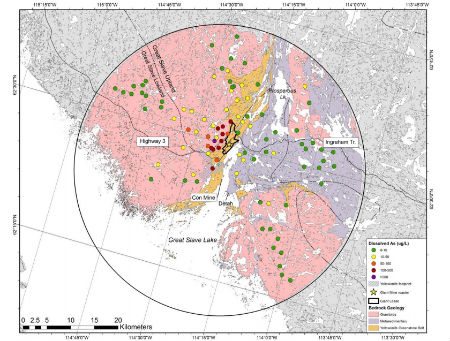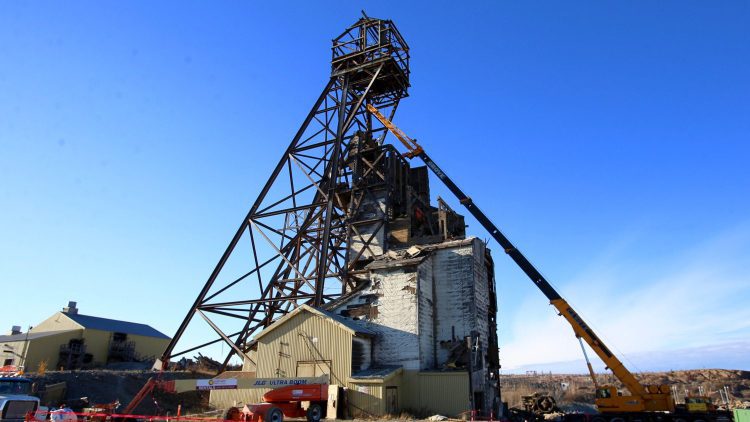Scientists have found surprisingly high and even dangerous levels of arsenic and mercury in a number of lakes surrounding Yellowknife.
In a study that was published Wednesday, a team from the University of Ottawa determined that some of the levels exceed guidelines for human and environmental safety.
The researchers also made the case that contaminants in the lakes are linked to industrial emissions from years past when Giant Mine was still operational.
During the 50 years that the gold mine operated, thousands of tonnes of highly toxic dust went up the roaster stack and settled on the ground and lakes around Yellowknife.

“Concentrations of arsenic are well above drinking water quality guidelines and protection of aquatic life for lakes within 17 kilometres of the Giant Mine,” said Jules Blais, who co-authored the academic paper.
Within four kilometres of the mine, arsenic levels were between three and 13 times higher than drinking water guidelines, Blais reported.
Even 17 kilometres away, about two-thirds of the sampled lakes had enough arsenic to damage aquatic life.
“This is where we would expect to see adverse effects on aquatic life,” said Blais. “There is evidence to suggest that important components of the aquatic food web are affected by arsenic in lakes around Yellowknife.”
Blais says arsenic in some of the lakes is also a human health concern and that “people who derive water from wells or lakes need to be concerned about this.”
The researchers note that none of the affected lakes are part of the watershed that supplies Yellowknife with its drinking water.
The city draws its water from the Yellowknife River, which Blais says is “mostly far removed from any industrial impact.”
The territorial government has also done research (pdf) into arsenic levels in soil and lakes in the region.
Giant Mine is currently the site of a massive federal remediation plan, with $1 billion in tax dollars earmarked to deal with the now-defunct mine.





